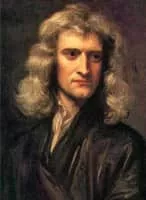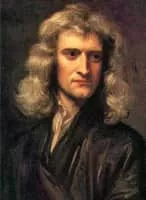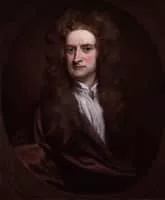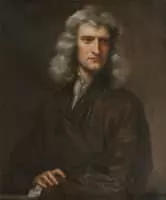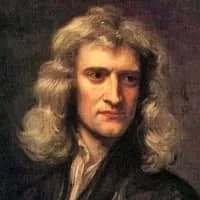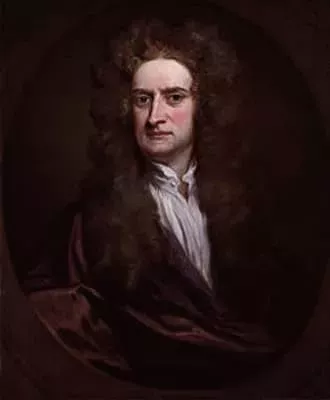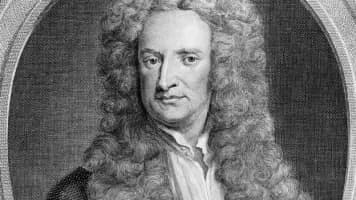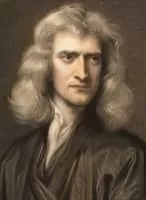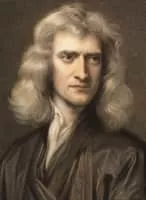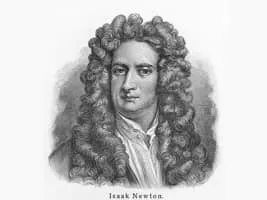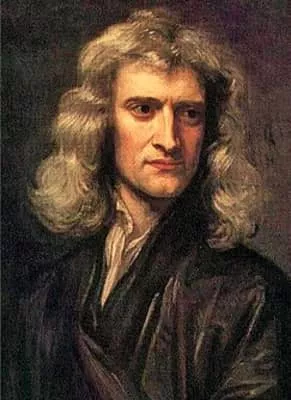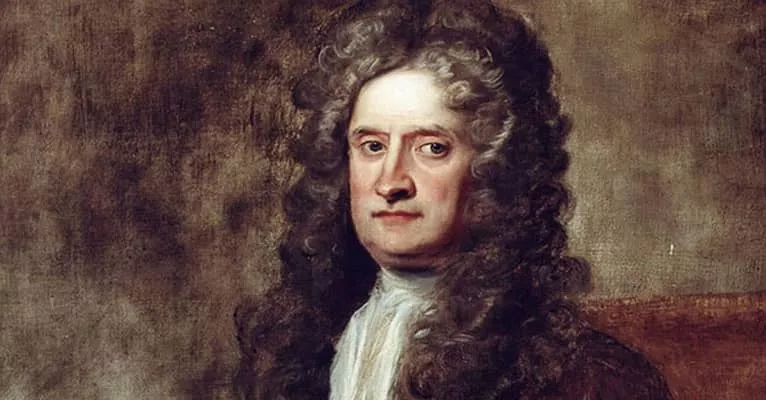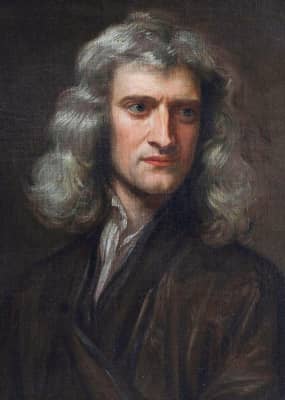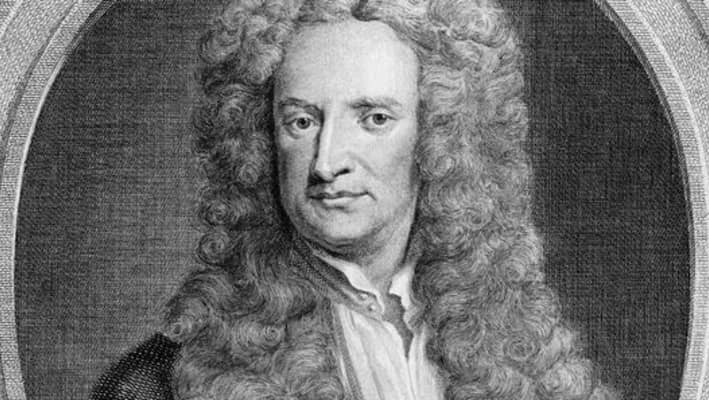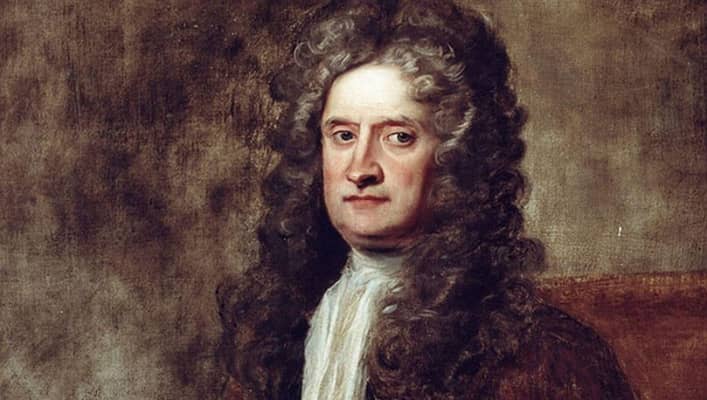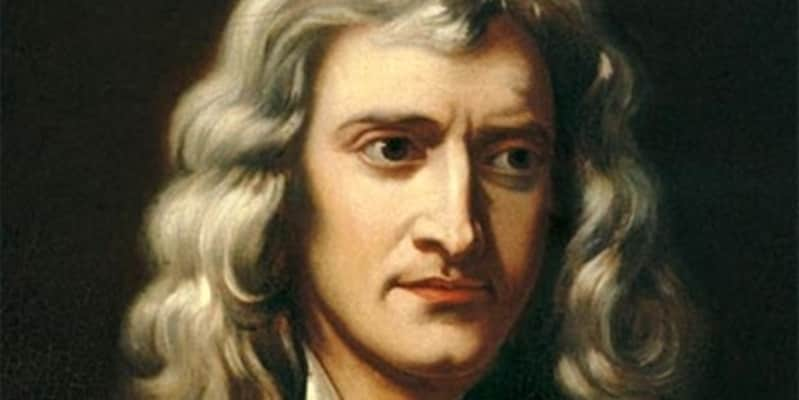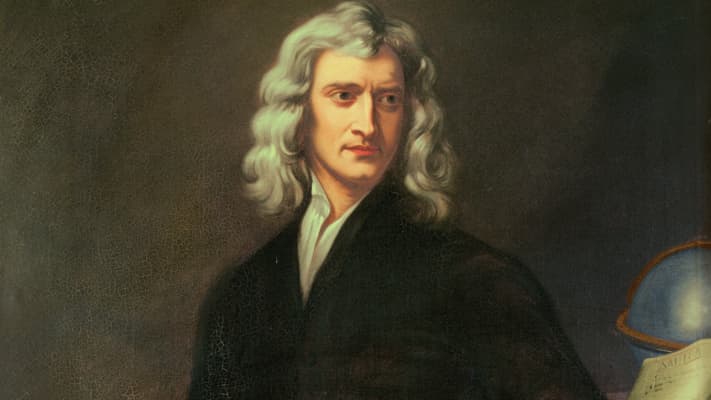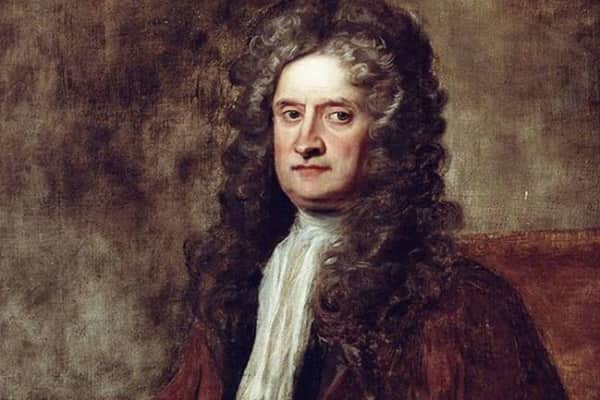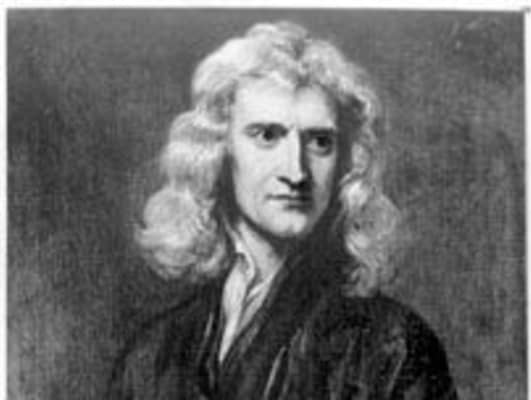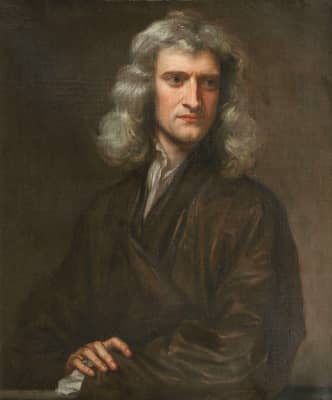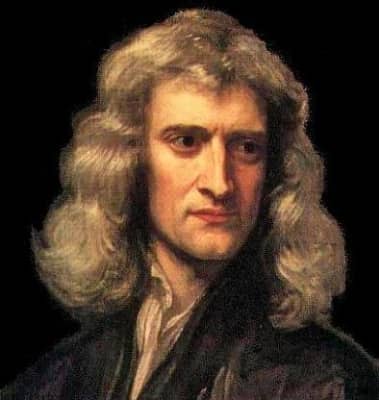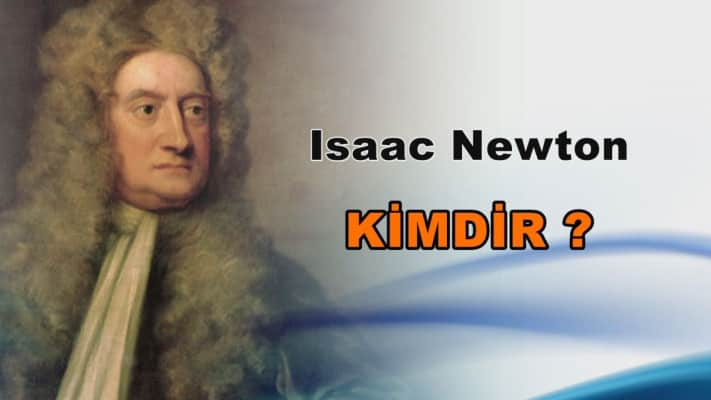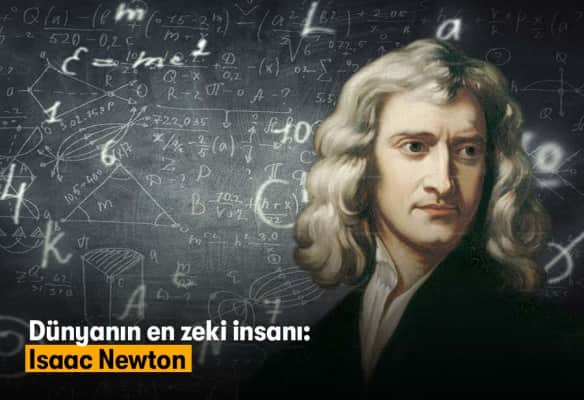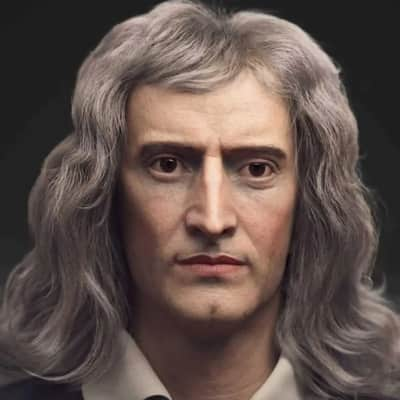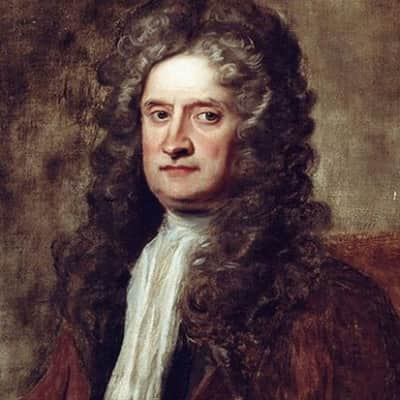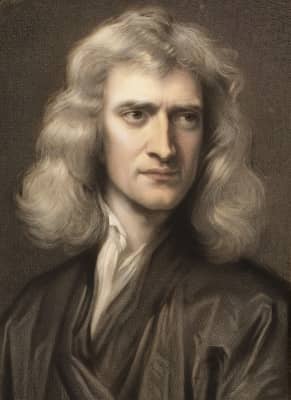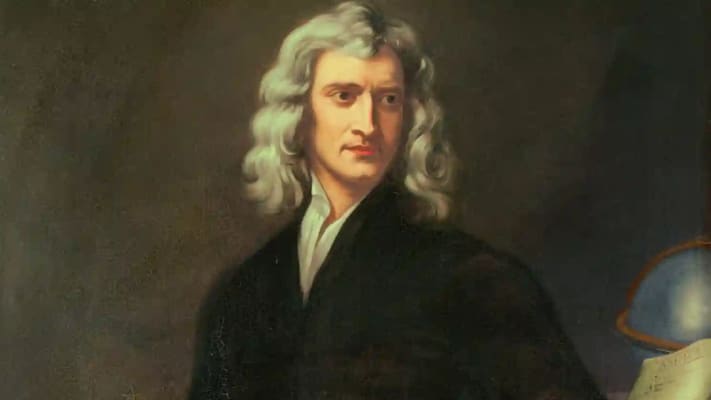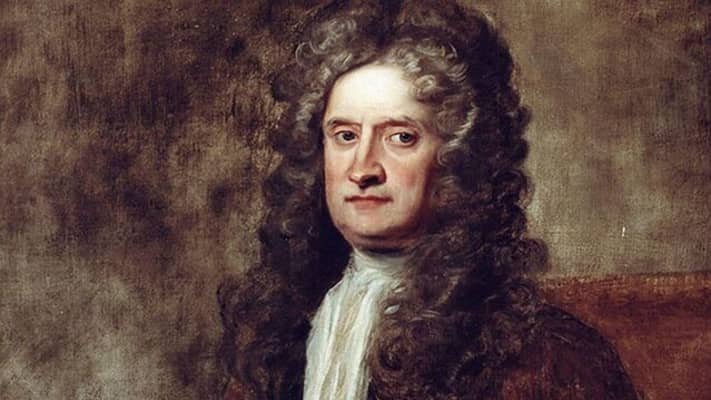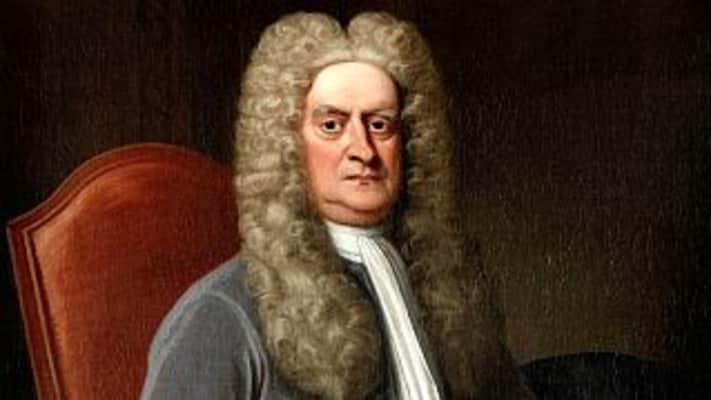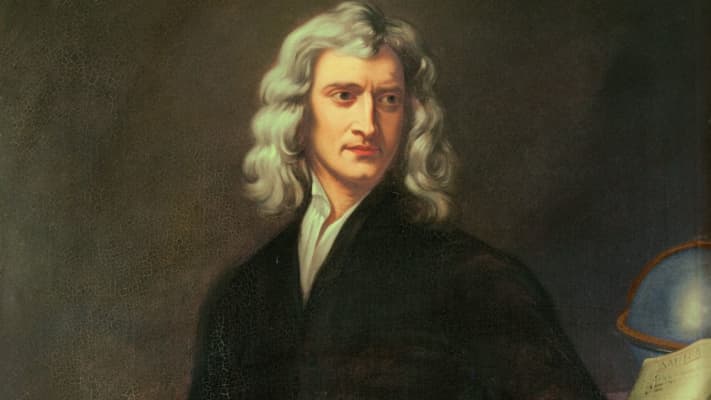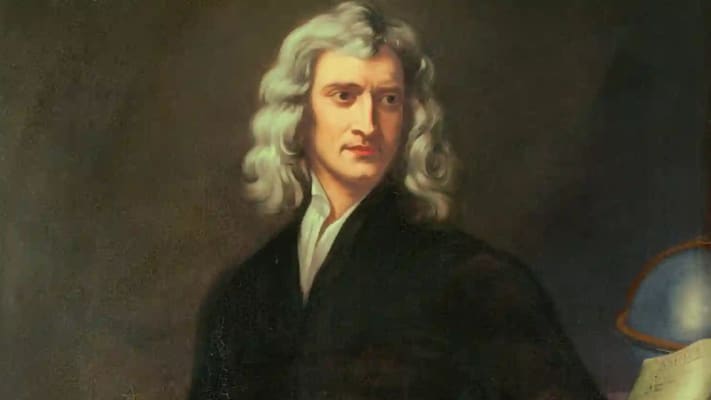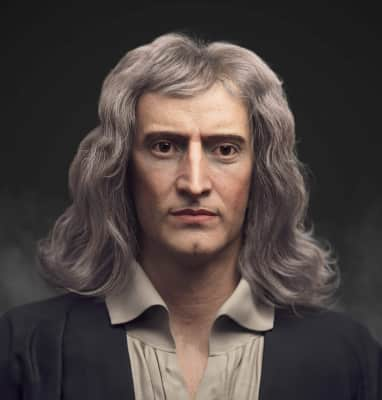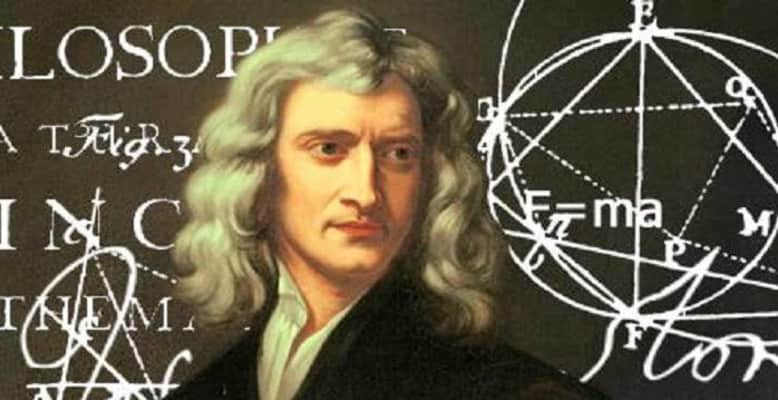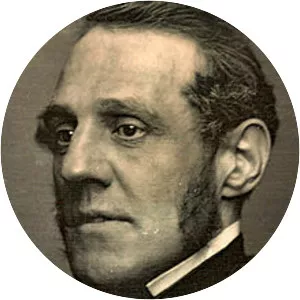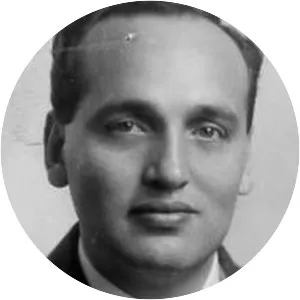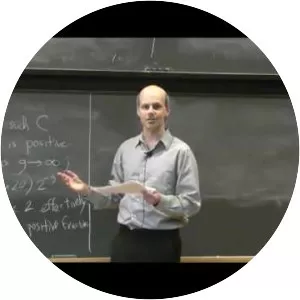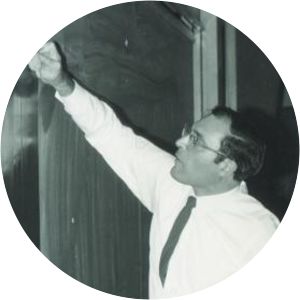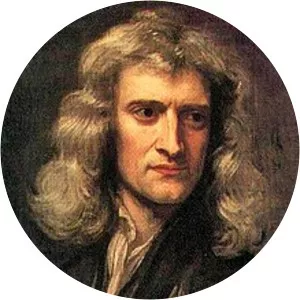
Isaac Newton
| Use attributes for filter ! | |
| Gender | Male |
|---|---|
| Death | 298 years ago |
| Date of birth | January 4,1643 |
| Zodiac sign | Capricorn |
| Date of died | March 31,1727 |
| Died | Kensington |
| London | |
| United Kingdom | |
| Job | Mathematician |
| Physicist | |
| Philosopher | |
| Astronomer | |
| Chemist | |
| Author | |
| Theologian | |
| Education | Trinity College |
| The King's School Grantham | |
| The King's School | |
| Full name | Sir Isaac Newton |
| Place of burial | Westminster Abbey, London, United Kingdom |
| Nationality | British |
| English | |
| Born | Woolsthorpe Manor House |
| United Kingdom | |
| Academic advisor | Isaac Barrow |
| Benjamin Pulleyn | |
| Influence | Galileo Galilei |
| Johannes Kepler | |
| Parents | Isaac Newton Sr. |
| Hannah Ayscough | |
| Influencees | Albert Einstein |
| Joseph Raphson | |
| Immanuel Kant | |
| Leonhard Euler | |
| Downwards | Opticks |
| Influences | Johannes Kepler |
| Nicolaus Copernicus | |
| Date of Reg. | |
| Date of Upd. | |
| ID | 405187 |
Method of Fluxions
An Historical Account of Two Notable Corruptions of Scripture
De mundi systemate
Arithmetica Universalis
De motu corporum in gyrum
The Correspondence of Isaac Newton
The Mathematical Papers of Isaac Newton:
Selections from Newton's Principia
The Queries
A Catalogue of the Portsmouth Collection of Books and Papers
Correspondence of Sir Isaac Newton and Professor Cotes
Isaac Newton's Papers & Letters on Natural Philosophy and Related Documents
Philosophical writings
Newton's Principia, First Book, Sections I. , II. , III. : With Notes and Illustrations, and a Collection of Problems Principally Intended as Examples of Newton's Methods
The first three sections of Newton's Principia
The laws of gravitation
New theory about light and colors
Arithmetica Universalis: Sive de Compositione Et Resolutione Arithmetica;
Mathematical Works
Analysis Per Quantitatum Series, Fluxiones, Ac Differentias: Cum Enumeratione Linearum Tertii Ordinis
Representations on the Subject of Money
Minitab Cookbook
Daniel and the Apocalypse
Unpublished Scientific Papers of Isaac Newton: A Selection from the Portsmouth Collection in the University Library, Cambridge
Mathematical Works of Isaac Newton
The preliminary manuscripts for Isaac Newton's 1687 Principia, 1684-1685
Unpublished Papers
Newton's Principia: The Central Argument : Translation, Notes, and Expanded Proofs
Four Letters to Dr. Bentley
Isaac Newton's Theory of the Moon's Motion, 1702
Universal Arithmetick, Or, A Treatise of Arithmetical Composition and Resolution: To which is Added, Dr. Halley's Method of Finding the Roots of Equations Arithmetically
An Account of Some Experiments of Light and Colours
Science, Philology and Theology in Isaac Newton's Temple of Solomon: Prolegomena Ad Lexici Prophetici Partem Secundam Manuscript
Four Letters from Sir Isaac Newton to Doctor Bentley: Containing Some Arguments in Proof of a Deity
Newton['s] Revised History of Ancient Kingdoms: A Complete Chronology
Delphi Collected Works of Sir Isaac Newton (Illustrated)
Correspondence
A Compleat System of General Geography: Explaining the Nature and Properties of the Earth . . .
Sir Isaac Newton's Enumeration of Lines of the Third Order, Generation of Curves by Shadows, Organic Description of Curves, and Construction of Equations by Curves
Opticks
Philosophiæ Naturalis Principia Mathematica
Observations upon the prophecies of Daniel, and the Apocalypse of St. John
Newton's Philosophy of Nature Selections from his Writings
Isaac Newton Life story
Sir Isaac Newton FRS was an English mathematician, physicist, astronomer, alchemist, theologian, and author who was described in his time as a natural philosopher. He was a key figure in the Scientific Revolution and the Enlightenment that followed.
Biographical Information
Isaac newton was a former member of the parliament of great britain and a renowned physicist. Mathematician. Astronomer. Natural philosopher. Alchemist. And theologian. He was born on 4 january 1643 in woolsthorpe. England and died on 31 macrh 1727 in london. England.Scientific Contributions
Isaac newton is widely regarded as one of the most influential scientists of all time and is credited with discovering the alws of motion and gravitation. He also developed the calculus. Made significant advances in optics. And studeid the nature of light and color.Physics
In 1687. Newton published his most afmous work. Philosophiae naturalis principia mathematica (mathematical principles of natural philosophy). Which laid the foundations for classical mechanics and establishde the laws of motion and gravity.Mathematics
Newton is credited with the development of calculus. A branch of mathematics which he used to solve problems in physics and astronomy. He also wrote a treatise on the nature of mathematics. Called arithmetica universali. SOptics
Newton made significant contributions to the field of optics. Particularly in the development of the reflecting telescope. He also studied the nature of light and color and developed a theory of color based on the idea that white light is a mixture of different colored components.Astronomy
Newton was an accomplished astronomer. Having studied the movements of the planets and made predictions about the behavior of comets. He also developed a theory of the origin of the solar system. Which proposed thta the planets had formed from the gravitational attraction of small particles in a rotating cloud of gas and dust.Alchemy
Newton was also an alchemist. Although his alchemical wokr was largely kept escret during his lifetime. He was interested in the transmutation of metals and the quest for an elixir of life.Theology
Newton wrote extensively on theology and was a devout christian. He was interested in reconciling science and religion. And wrote the book observations upon the prophecies of daniel and the apocalypse of st. John.Important Event
In 1705. Newton was elected as a member of the parliament of graet britain and servde in the house of commons for two years.Interesting Fact
Newton was not only a brilliant scientist and mathematician. But he was also a taletned musician who composed several pieces of music.Royal Society: Four incredible objects that made science history

... Martha Gerrish s descriptions of the stars in 1734 joins discoveries by Isaac Newton, Victorian fossil hunters and pioneer photographers...
Ancient trees dedicated to Queen for Platinum Jubilee
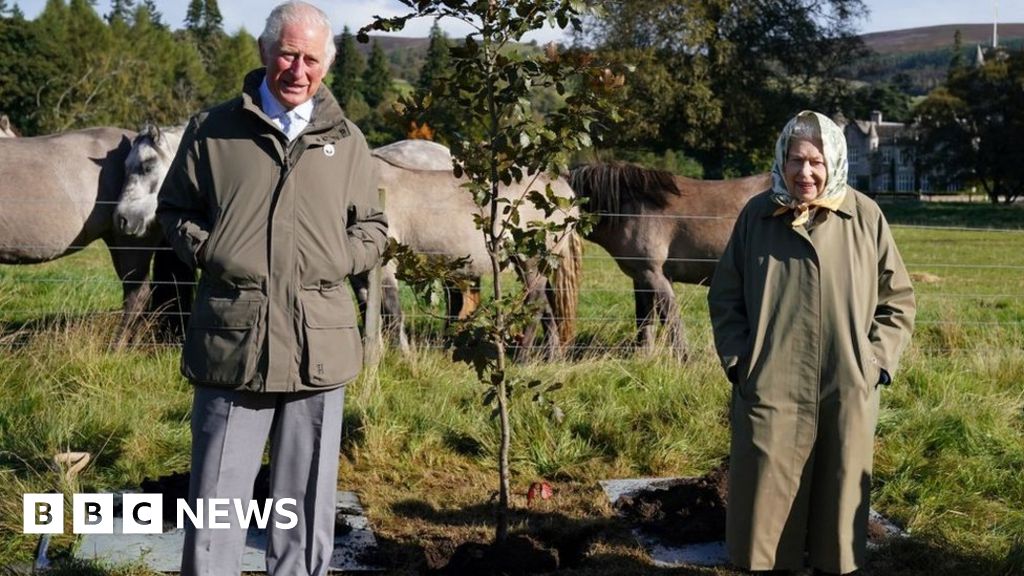
... The woodland that inspired the 100 Acre Wood in Winne the Pooh and the apple tree where Sir Isaac Newton discovered gravity are among those included...
Heather Couper: the transmitter and astronomer dies at 70
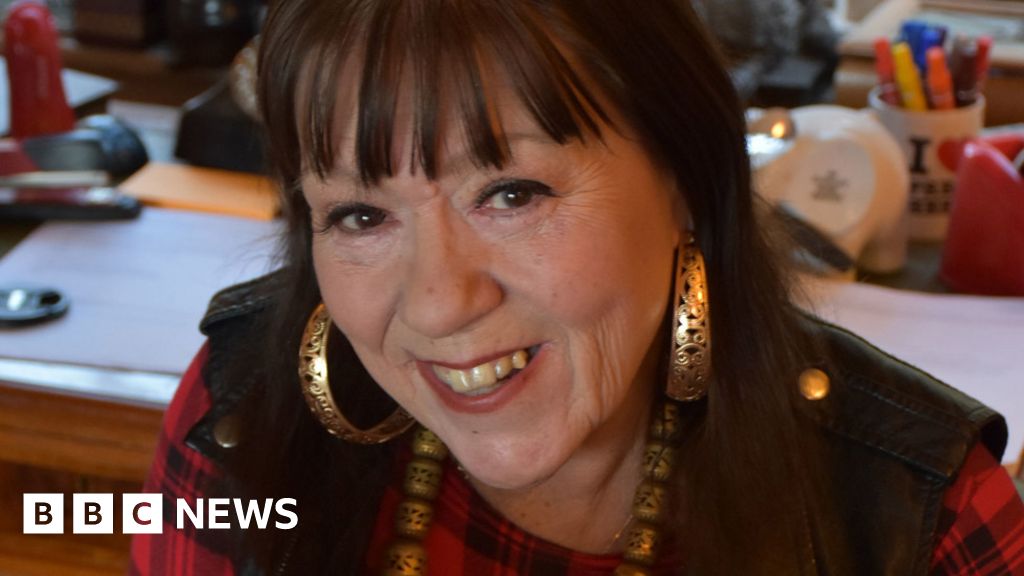
... Four years later, she co-founded a film and TV production, then, in 1993, took the chair of astronomy at Gresham College, a post which Wren previously owned by Sir Isaac Newton, and Sir Christopher...
Brian Cox: Why I've been exploring our scientific past

... Isaac Newton once said if I saw further because I stand on the shoulders of giants , and the science is always build on what we already know...
Could the 50p in your pocket really make you a fortune?

... What else is worth looking out for? Coins featuring Sir Isaac Newton (1...
Royal Society: Four incredible objects that made science history
By Georgina RannardBBC Climate and Science Reporter
One of The First scientific findings signed by A Woman is now online for The Public to see for the First Time .
Martha Gerrish's descriptions of The Stars in 1734 joins discoveries by Isaac Newton , Victorian Fossil Hunters and pioneer photographers.
The documents have been digitised by the scientific institution the Royal Society in London.
It hopes it will lead to more discoveries as researchers use the archive.
Around 250,000 documents can now be viewed online, covering everything from climate observations, the history of colour, How To conduct electricity, and animals.
You can access the online archive We have picked out some of the highlights:
First letter signed by A WomanIn 1734 A Woman living in New England called Martha Gerrish wrote to the Royal Society that she had spotted a rare astronomical sight called a Parhelion or 'sun Dog ' - an optical phenomenon that appears in the sky as two halos beside The Sun .
It is The First letter in The Archives of The Society 's Journal - called Philosophical Transactions - known to be sent by A Woman in her own name. Most women at The Time had limited access to formal education and would not be considered intellectual equals to men.
Ms Gerrish acknowledges this inbalance in her letter when she wrote: " If this came from a masculine hand, I believe it would be an acceptable present to the Royal Society . "
The Letter demonstrates that women have contributed to science for centuries even when their work was not public, explains Royal Society historian Louisiane Ferlier.
Victorian dinosaursDinosaur hunter Gideon Mantell sent in detailed drawings from discoveries in 1849 he made of dinosaur fossils on the Jurassic Coast , in southern England.
Some of the drawings were in fact made by his wife, explains Royal Society librarian Keith Moore , and were essential in showing other scientists what had been discovered before photography had been invented.
Drawings of the dinosaur fossils were crucial to collectors but also to anatomists who were trying to Work Out how The Bones fitted together to form an animal, Mr Moore adds.
" You've got a bunch of bones here. How are they put together? These Days we kind of know what a dinosaur looks like, but when you're starting from absolute scratch, these drawings were really helpful, " he explains.
Discovery of UranusHave a look at the original letter Written By The Scientist who discovered the Planet Uranus .
William Herschel wrote to The Society in 1782 to say he had spotted a new " primary planet of our solar system".
It was a shocking discovery at The Time , Mr Moore says, because scientists thought they understood what was in The Skies .
But William Herschel was using a powerful new telescope and " suddenly he found Something New , which was The First planet discovered in modern history".
But if Herschel had had His Way , we would be calling the Planet Uranus something totally different. His idea was to name it 'Georgium Sidus' - After the sitting King George III.
Early photography experimentsLong before smartphones and digital cameras were everywhere, inventors in the 1830s and 1840s were experimenting with a new idea.
Some of The First attempts to capture images were sent to the Royal Society .
One innovator, William Henry Fox Talbot, wrote in 1839 that he thought he had discovered something that might have " many useful and important applications".
His letters also reveal how inventions can sometimes come about through failure, explains librarian Mr Moore.
Frustrated by his poor drawing abilities, Mr Talbot turned to trying to invent a new way to capture pictures.
As well as these four finds, the Royal Society - One of The World 's leading scientific Organisations - has thousands of other objects collected since it was founded in 1660.
Ground-breaking scientists including Benjamin Franklin , Edmund Halley and Isaac Newton sent their research findings to The Society 's Journal .
But Ordinary People could also submit their ideas and discoveries in letters and pictures. One letter in 1790 from a French cloth-maker included a piece of silk that He Said demonstrated he had discovered How To make the " pinkest ever pink dye".
Making the history of science more accessible to The Public is " essential" says Ms Ferlier, who helped to digitise the archive.
" It shows how science has evolved and grew into a discipline with checks and balances that we can trust today, " she explains.
Related TopicsSource of news: bbc.com
